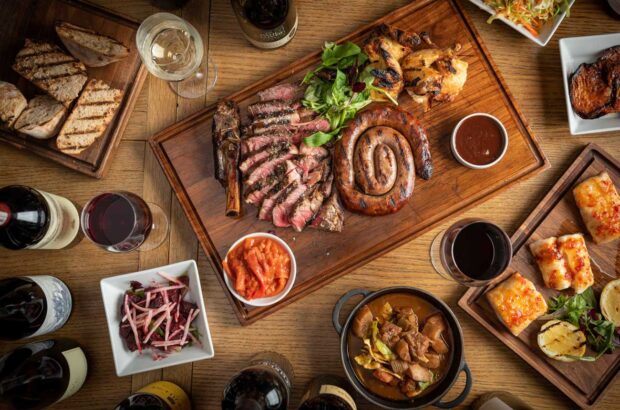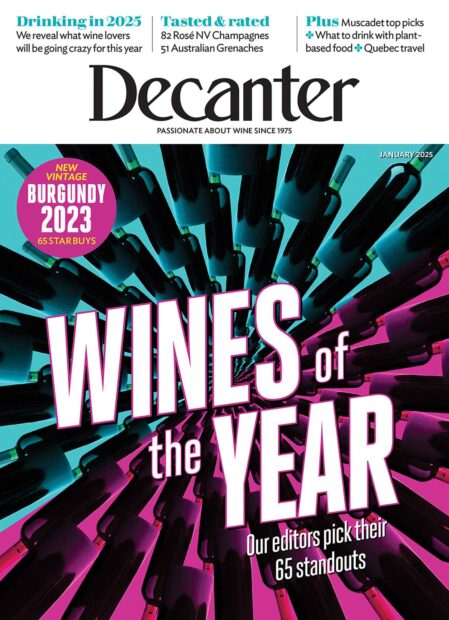The British Isles has influenced certain wine styles more than any other nation. Julien Hitner looks back at the history of claret, Port and Champagne, and explores Britain’s enduring love for these styles.
How Britain shaped the wine world: Champagne
An 1846 Perrier-Jouet bottle
In contrast to claret and Port, British contributions to Champagne have been somewhat more recent. One of these, however, extends as far back as sparkling Champagne’s earliest days, and once again it involves British glass bottles.
In order for such a wine to exist as we know it today, strong enough bottles were required to withstand the enormous pressure formed from the build-up of carbon dioxide inside. Matters were greatly improved in 1675, when leading glassmaking expert George Ravenscroft perfected the use of lead oxide in its manufacture. Despite this, explosions would remain all too common until the final quarter of the 19th century, when bottles that were capable of withstanding an internal pressure of six atmospheres or more were finally perfected.
Speaking of the late-19th century, it may be surprising to learn that virtually all Champagne produced up to this point was essentially sweet. Granted, levels of sweetness varied from market to market (the Russians enjoyed particularly sugary versions); yet ‘dry’ Champagne as it is known today was practically non-existent.
Then in 1848, an enterprising London wine merchant named Burnes asked the unthinkable: to taste Perrier-Jouët’s 1846 vintage without a dosage of sugar. Though the producers were taken aback, Burnes argued that because Champagne had to compete with so many other sweet wines, would not a fundamentally dry version generate an entirely new market? Eventually, Perrier-Jouët agreed to send Burnes a small shipment of the 1846 vintage, where it was shared at a well-known military club.
It was a disaster. The wine was unappreciated, and Burnes was forced to send his remaining bottles back to France and exchange them for sweet ones. But not all was lost. In 1860, several firms, perhaps remembering the story of Burnes’ experiment, sent British merchants some Champagne from the 1857 vintage that was drier and more mature than usual. These were received very favourably, and it was not long before British merchants began to request increasingly drier wines. By the time the famous 1874 vintage was released, virtually all major houses were crafting dry examples, more or less in the ‘brut’ style, for the British Champagne market.
During these years, Champagne enthusiasts were initially divided into two distinct camps: those that favoured this new dry style and others that preferred the old one. Not dissimilar from today, it was a generational issue, as parents stuck with the sweet versions, while their offspring would opt for the dry style.
In Punch magazine, a drawing by John Leech depicted a dinner party at which a schoolboy (presumably of age) is offered some sweet Champagne by his uncle. ‘Now, George, my boy, there’s a glass of Champagne for you. Don’t get such stuff at school, eh?’ George’s reply: ‘Awfully sweet…. But I’ve arrived at a time of life when I confess I like my wine dry.’ This type of dry Champagne would ultimately emerge as the world’s most popular style, its beginnings pointing to a daring London wine merchant looking toward the future.
Continuing influence
From countless angles, Britain’s thirsty inhabitants have achieved unequalled feats in influencing the historical trajectory of many wine types. Yet even today, the island continues to shape the wine world in innumerable ways.
Home to the Court of Master Sommeliers and the Institute of Masters of Wine, not to mention at least several magazines and books of global recognition, Britain has emerged in the 21st century as a leading nation for educational advancement and appreciation, with London at the top of the list for fine wine sales and overall selection.
Of course, this is not to suggest that other nations have been remiss in contributions, only that the British as a group always seem to have been a particularly parched pack of enthusiasts.







